Blog categories
Blog archive
RSS Blog posts tagged with 'inspiration'
Blog Filters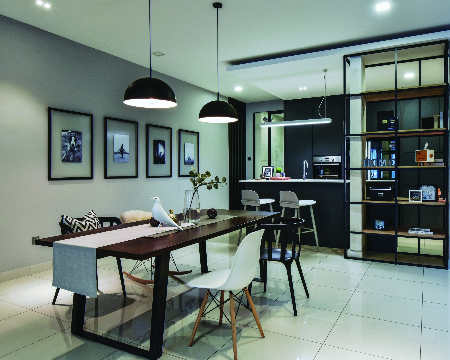
Creating a Well-Composed Dining Room
Friday, November 20, 2020
Whether you have a large formal dining hall or a small area for daily mealtimes next to the living room, here’s how to put together different interior features to ensure your dining room looks and feels good from every angle.
 Interior design by: The Roof Studio
Interior design by: The Roof Studio
Whether you’re hosting a family dinner or just getting together for a weeknight meal, the dining room is where people come together. From modern to classic, there are many ways to turn this room into a cosy space that is perfect for entertaining your guest in comfort and style. Gone are the days when you need to have matching tables and chairs at your dining table. The trend is to go for features that complement each other. If you are going for a modern look, aim for furniture that has clean lines and sturdy material. Also, make good use of tableware to pull it all together.
Palette Play
It's easier to create a well-designed dining room when you have a strong starting point to guide you - this is where having a colour palette in mind can really help you focus on the elements you can use. If you love a certain colour and have a particular hue in mind for your dining room, start with this colour.
 Interior design by: The Roof Studio
Interior design by: The Roof Studio
For example, yellows are a great way to create a bright and vibrant dining space. Start with light yellow for the walls, then add on bolder shades of complementary tones like blues. However if you are not confident about using bold colours, go for a neutral and monochrome palette, like the dining room pictured here.
Accent Pieces
Don't just stop at tables and chairs in the dining room. If you have space, accent furniture like a console or an armoire can work wonders to help create a focal point and enhance those blank walls that envelope your dining area. However, choose something that blends with your dining table.
 Interior design by: Chaplins Furniture
Interior design by: Chaplins Furniture
In this dining room, a bright blue console works beautifully to bring attention to the table. The decorative accessories and mirror above the console add a lively look to the atmosphere. The bold pendant lamps are also just the perfect features to balance off the the space.
Material Maneuver
 Interior design by: Mode Interior Style
Interior design by: Mode Interior Style
Mixing and matching different materials in the dining room can offer a dramatic yet personalised effect to your space. Balance is key, as you don't want a single material to overwhelm the rest. Also offset hard and sturdy surfaces with soft furnishing to give your space a sense of cosy warmth.
 Interior design by: Mode Interior Style
Interior design by: Mode Interior Style
In this dining room, there is a bold variety of materials ranging from solid wood and faux grass to brick-like finishes on the opposite wall. The addition of the marble-like feature wall balances off the dark-coloured surfaces. The use of wood flooring just around the dining space also helps to demarcate the space clearly.
Vibrant Variety
Another way to mix materials is through a variety of different seating and surfaces. Mix-and-match seating works well when each chair or bench is of a similar style and shape. Also think about what you use as centrepieces on your dining table.
 Wood and ratan are making a huge comeback in the dining room, but those from the lighter range are preferred. Go for a Zen effect but break from the monotony with stronger tones and textures. Interior design by: iDecorate
Wood and ratan are making a huge comeback in the dining room, but those from the lighter range are preferred. Go for a Zen effect but break from the monotony with stronger tones and textures. Interior design by: iDecorate
In this warm and neutral dining room, the woven rattan chairs bring a sense of similarity to the entire set, but if you look closely, every single piece is individual in style. To further enhance the room, a tableware set with a similar look and feel is used.
Trendy Tableware
 Interior design by: iDecorate
Interior design by: iDecorate
Finally, complete your dining room with beautiful tableware to bring everything together. When it comes to choosing a dinnerware set, the choice is usually a matter of personal taste. It’s a necessity for any table, but it also sets the mood for a meal. For example, formal china can make a momentous occasion feel even more special, while basic stoneware is a good match for a low-fuss weeknight dinner.
 Colour coordinate your tableware by having a neutral backdrop and then enhancing it with bolder tones through colourful plates, bowls, and mug. Interior design by: Dunelm
Colour coordinate your tableware by having a neutral backdrop and then enhancing it with bolder tones through colourful plates, bowls, and mug. Interior design by: Dunelm
In the example here, a white dinner set complemented by green accents bring out a nature-inspired theme that enhances the wood dining table. To add texture, fabric placemats tone down the hard surfaces and introduce a lush quality to the space.
 Interior design by: Dunelm
Interior design by: Dunelm
Article by: Lily Wong
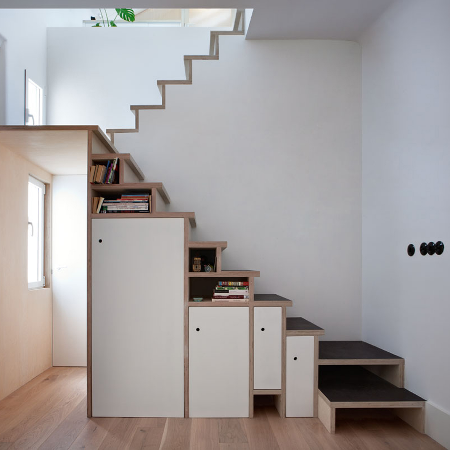
Step Storage: 7 Creative Under-Stairs Storage
Friday, November 20, 2020
The empty space under the stairs sometimes gets a bad rap on account of the many stories depicted in film that paint this potential storage space as a nest of insidious horror - or at the very least, a place of relative obscurity where things go to be forgotten. But in this modern age of urban living - where gratuitous space typically comes at a premium, we felt it be prudent to look at these spaces under the stairs in a new light, in order to discover novel ways of incorporating storage options.
Climbing Cabinetry
 Image Credit: Buj+Colón Arquitectos
Image Credit: Buj+Colón Arquitectos
In a compact space where a full-fledged staircase would have been overwhelmingly large, a lightweight stairway is formed out of progressively taller cabinets and bookshelves, with an intermediate split-level landing simplistically projecting from the top of the cabinetry. The result is deliberately left without a railing to achieve an unobtrusive stairway that is ingeniously disguised as storage.
Footwear Hideaway
 Image Credit: Post Architecture
Image Credit: Post Architecture
The act of removing one’s shoes when entering a home has transitioned from being a distinctly Asiatic custom of tradition to a practical measure in many urban homes around the world - which necessitates considerable storage fixtures to be incorporated at the entryway. The pictured shoe drawers, designed by Toronto-based Post Architecture, enable a sizable family’s worth of shoes to be neatly stowed away in the unassuming space beneath the stairs.
Stairway Stack
 Image Credit: Schemaa Architects
Image Credit: Schemaa Architects
While a stairway with a steep incline may present a formidable barrier to the upper floors, the complete use of extra space for cabinetry helps to disguise the risers and treads of the pictured loft-style staircase. To soften the gradient of the stairway, Schemaa (a Parisian architecture firm) incorporates intermediate blocks of wood to break up the high risers of the steps - resulting in a more graceful incline.
Aperitif Alcove
 Image Credit: DIY Network
Image Credit: DIY Network
An alternative to wholly dedicating the space under the stairs to storage is put forward by the DIY Network’s Watson Hawkins. The idea entails moving beyond pure storage and adding a facet of functionality to the space. In the pictured example, nearby countertops are extended to the space beneath the stairs, with cabinetry truncated at an angle to match the slope of the stairway’s carriage.
Sequestered Office
 Image Credit: Translina
Image Credit: Translina
For the majority of those who often find themselves working at a desk while at home, the extra headroom often goes to waste during those hours seated at a desk. Rather than dedicating an entire room to a home office and letting that overhead volume go unused, the pictured staircase incorporates a diminutive office space - where the lower clearance serves to neatly encapsulate the work corner.
Foyer Fixtures
 Image Credit: Minimalist Desk
Image Credit: Minimalist Desk
Walking out of the front door is a ritual that often gets repeated whenever a necessary object gets left behind - with the procedure often followed by dashes up and down the stairs to retrieve some forgotten item. The entryway often gets cluttered with catch-all containers and furniture as a result. The pictured stairway holds an ordered array of wicker baskets in niches beneath the carriage to negate the clutter and hide vital containers from sight.
Hidden Habitat
 Image Credit: Basement Remodeling
Image Credit: Basement Remodeling
Spaces deemed too small for a human to utilise can be handed over to our smaller companions instead. With their uniquely low-lying perspectives, even the smallest of burrows can shelter whole landscapes that are worlds apart from their larger environment. The pictured stairway accommodates a desk just wide enough to be used (by a human) for writing letters - with the extra headroom dedicated to wine storage, while the extra space to the side goes to one lucky quadruped.
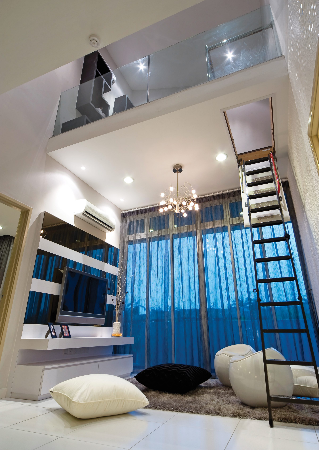
Choosing the Right Decorative Style for You
Friday, November 20, 2020
We've looked at kitchen countertop materials to describe various materials and how they may be suited to different personalities – but until now, we have not attempted to apply that same perspective to decorative styles. While decorative styles are probably as varied as people, we have been seeing some similar personalities gravitating towards particular aesthetic styles – which we will attempt to describe here for the benefit of anyone who might be in the midst of finding themselves and their preferred decorative style.
There are innumerable methods for analysing personality, but perhaps the most stringently tested theoretical framework would be that of the Big Five personality traits (openness, conscientiousness, extraversion, agreeableness, and neuroticism) – which will be the theory we adopt here in order to generally associate a particular decorative style with a dominant personality trait.
Openness
One of the first Big Five personality traits to be discussed is usually an individual's "openness to experience" – which roughly translates to a person's imagination and bravery to venture into uncharted waters. A person who is considered high in "openness" is regarded as being receptive to variety – easily gravitating towards learning, art, or other creative pursuits; while a person low in "openness" will display a preference for routine and representational works of art such as classical sculptures rather than abstract or interpretive designs.
 It takes a certain kind of bravery to seek out and incorporate unconventional features — such as the pictured loft space, made accessible with the addition of an industrial attic (loft) ladder. Interior design by: Nice-Style Refurbishment
It takes a certain kind of bravery to seek out and incorporate unconventional features — such as the pictured loft space, made accessible with the addition of an industrial attic (loft) ladder. Interior design by: Nice-Style Refurbishment
Historically accurate decorative styles such as faithful classicism may not be ideal for highly open individuals, who tend to prefer more varied, esoteric, or eccentric blends of styles to reflect their unique tastes. An open person would seek to forge a unique décor wherever possible – perhaps even going as far as rearranging entire floor plans to achieve something different. On the flipside, a less open person may gravitate toward styles that are more commonly represented in today's homes – or even a style representing something from childhood – while adhering to the convention of the day as much as possible.
Conscientiousness
Describing how people react to expectations of society at large, a person high in conscientiousness is more likely to consider rules both written and unspoken – such as is required when attempting to pay tribute to classical aesthetics. A highly conscientious person considers the experience of guests and visitors more than their own comfort, and will likely seek out a familiar décor – such as a variation of modern contemporary or classical modern style – to achieve a comforting ambience for the benefit of others while aiming for the hallmarks of luxury.
 A conscientious homeowner seeks to enforce implicit aesthetic rules rather than break them. Designer: Design Integra
A conscientious homeowner seeks to enforce implicit aesthetic rules rather than break them. Designer: Design Integra
A less conscientious individual may be seen as unpredictable and impulsive – and the right decorative style in this case is more a matter of personal preference than anything else. A person low in conscientiousness will likely gravitate towards a unique décor to represent their singular personalities, rather than adhering to convention for the satisfaction of guests.
Extraversion
The dichotomy of extraversion and introversion is perhaps the most popular of facets in personality research – a person is considered extroverted when they display an innate attraction for social activity, while an introvert is one who values alone-time over a stint of hanging out.
 The home of an extravert will more than likely present bold shades favoured by exuberant personalities. Interior design by: Surface R
The home of an extravert will more than likely present bold shades favoured by exuberant personalities. Interior design by: Surface R
Extroverts plan their home around social events, considering factors like the placement of extra seating and opting for bold colours rather than relying on a neutral palette. Introverts, on the other hand, will prefer to design for personal comfort and use softer colours in the creation of solitary spaces such as the study or the bedroom.
Agreeableness
A person is considered agreeable when they display a high sensitivity for the feelings of others – and their decorative choices might closer reflect the norms of modern styling, while less agreeable individuals may be seen as being more concerned with their own avenues of self-expression.
 Individuals high in agreeableness will tend to prioritise the familiarity of the neutral palette and twentieth-century designs over self-expression. Interior design by: Alpex Design
Individuals high in agreeableness will tend to prioritise the familiarity of the neutral palette and twentieth-century designs over self-expression. Interior design by: Alpex Design
The most intriguing and awe-inspiring decorative styles are to be found in the homes of less agreeable individuals – while one can expect something more contemporary, less esoteric, and with greater mass-appeal in the home of an agreeable person.
Neuroticism
As a measure of emotional stability and how well a person copes with stress, the trait of neuroticism is not as well associated with any particular decorative style as any of the four previously described personality traits – but some conclusions can still be drawn. For instance, a highly neurotic person with a stressful career may have no use or appreciation for a study — the mere sight of a workstation may elicit feelings of frustration in the home.
 A carefree personality, low in neuroticism, lets stress roll right off and wouldn't be the least bit disturbed by clutter or asymmetry. Interior design by: Pins Studio
A carefree personality, low in neuroticism, lets stress roll right off and wouldn't be the least bit disturbed by clutter or asymmetry. Interior design by: Pins Studio
Neuroticism also informs how one deals with clutter in the home, a person who is more inclined to keep spaces clean, and is also less willing to cope with the stress of a mess, will likely be on the lookout for storage options – while the messier and less neurotic among us may not have even considered cleaning up at all.

The Parenting Personality Palette
Friday, November 20, 2020
Nippon Paint Malaysia uncovers some of the key parenting personality traits based on your most frequented colour!
Did you know that your favourite colour reveals your dominant parenting style? Certain studies on the psychology of colour that have been carried out indicate that your preferred colour closely reflects some of your most dominant personality traits and strongest characteristics; even down to the various ways in which you behave towards your child (or children!). Take for instance, parents who prefer the blue hues are often regarded as more dependable and calm figures whilst those who gravitate towards brighter shades are known to be more assertive parents with a stronger personality. If you have more than ONE favourite colour, you may not have all the traits from one particular colour, but instead your parenting style comprises of a mixture of the various characteristics. Let’s say if you’re fond of hues such as pink and yellow, you may have a sensitive personality with enthusiastic vibes.


Read on below to find out if your favourite shade closely reflects your parenting traits.
The Parenting Personality Palette
It’s time to reflect upon your true colours and see if your favourite colour resonates closely with your respective parenting traits.
Nippon Paint Malaysia offers a wide range of colours that matches your parenting personality to the tee, ranging from dark to the lighter spectrum of hues, from warmer to cooler colour shades. There’s mocha brown, khaki green, rose-pink… and the list goes on!
How about taking inspiration to the next level and reflecting your parenting personality colour(s) on the walls of your home?
Here are some colours from Nippon Paint to consider for your next redecorating project at home featuring your parenting personality colour complemented with other suitable shades:
The Calm & Collected (Blue)
The colour blue is recognised as the most calming shade of the colour spectrum, which makes it one of the top choices of favourite colours around the world. If you find yourself not overreacting to your children most of the time, the colour blue reflects your calm persona best.

To create overall soothing vibes all around your home, select colours such as light green, or a light peach to fully complement your blue themed walls. If you’re a true-blue fan, you could even opt for pairing the palest blue with navy without overwhelming your entire room.
The Enthusiastic Ones (Red)
Red is known to be a strong colour that resonates well amongst those that carry a more dominating trait. Parents who favour the colour red are typically strong-willed – and much like the colour, they do not easily give in to a child’s requests.

However, in a home, everything in the colour red may be too overwhelming… so why not try balance red with softer shades such as light grey or neutral beige tones for a greater contrast?
The Nurturing Couple (Pink)
Those who like the colour pink often convey a reassuring ear to their children and see things in a positive light in most situations. While light pink is gentler on the eyes; some are a fan of brighter pinks such as fuchsia which also look great on walls if paired with clean colours such as beige or the lightest shade of yellow.

If you’re a fan of lighter shades of pink, try complementing this with light pink tones for a classy look or opt for striking blue for fun vibes.
The Fair Minded (Green)
A colour that reflects the personality of a calm yet logical and analytical figure who often takes a more supportive and nurturing approach at most instances. If you find yourself reasoning with your child or children over their actions, green is the colour for you. Being a neutral shade, green can be paired with almost any shade on the colour wheel, depending on the desired ambience for your room.

To fully resonate with your calm personality, go along the lines of a pastel pink with a soft peach shade. Otherwise, for those who prefer strong green undertones, match your green feature wall with a light oak brown shade for a down-to-earth vibe.
The Cool Ones (Yellow)
Yellow represents the colour of enthusiastic parents who are often easily excitable over most things, their children included. When you think yellow, the first word that comes to mind is ‘bright’! …which makes the colour an easy feat to match with two extremes, either choosing to pair it with a pale colour or opting for colours on the darker end of the spectrum.

For a dark colour, shades such green or grey makes for a good contrast against any yellow-themed feature wall. For an earthier tone, opt for colours such as brown.
Here are some top tips to consider when repainting your home!
- To ensure a safe environment for your child/children, try a child-safe odorless paint from Nippon Paint’s Child Wellness Range (For more information, log on to: www.nipponpaint.com.my/childwellness)
- Opt for colours which are contrasting to your feature wall for a vibrant look
- Measure the space of each room to get an estimated amount of paint required
- Care for the walls of your home by ensuring proper preparation is carried out (i.e priming the walls prior to painting)
- Have a rough idea on your overall colour theme. Fret not if you’re unsure of what colour suits your room best and opt for expert advice from Nippon Paint’s Colour Scheme Professional Services at www.colourscheme.com.my to get the perfect recommended shades for your rooms.
If you’re looking to repaint the walls of your home but are unsure where to begin, visit www.nipponpaint.com.my to spark some inspiration!
Text and images by Nippon Paint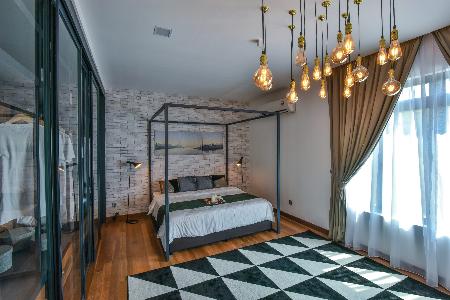
4 Bedroom Styles To Inspire You
Friday, November 20, 2020
Undecided as to whether you find comfort in simplicity, or pine for the ornate antiquities of times past? This summary of common bedroom styles will point you in the right direction.
It takes a highly proficient mind-reader to accurately determine the kind of decorative style that appeals to any individual - and while the most seasoned practitioners of interior design may be able to guess your preferences from a few brief interactions, there is no better judge of one’s own position on the spectrum of order and chaos than the self.
While the less private areas of a home may feature a décor to impress, the bedroom is largely a concern for the occupant - so before settling on your choice of furniture and materials for the bedroom, take a look at this introduction to the most common styles of décor and decide on which speaks to you the most.
Industrial Chic
 Interior design by: Homlux Interior Furnishing
Interior design by: Homlux Interior Furnishing
Some personalities gravitate towards ornate classicism for the grandeur, and others find minimalism appealing for the sake of simplicity – but the aesthetics of industrial style appeals to those who seek a lightweight décor imbued with aged sophistication. As with the pictured bedroom decorated by Homlux Interior Furnishing, a bedroom can be made industrial as a whole – with a strict reliance on materials commonly found in places of work, or a more eclectic décor can be formed with a sprinkling of a few bare light bulbs hanging by their wires, pieces of patinated metals, and stretches of exposed brickwork.
Mod Pop
 Interior design by: Casa Indah Design
Interior design by: Casa Indah Design
It goes without saying that the neutral palette dominates most interiors in the present age, but an over-reliance on the popular colour scheme may result in a sterile and impersonal décor. Rather than completely adhering to the confines of the neutral palette, designers and homeowners tend to agree that bedrooms should be canvases for expressions of personality.
 Interior design by: Casa Indah Design
Interior design by: Casa Indah Design
The pictured bedroom is saturated with neutral hues in adherence to modern convention, but the space is marked out as belonging to a youthful urbanite with vibrant splashes of yellow – presented in well-lit box niches against the subtle background of the walls.
 Interior design by: Casa Indah Design
Interior design by: Casa Indah Design
Contemporary Elegance
 Interior design by: Surface R
Interior design by: Surface R
Between the overstuffed upholstery of tradition and the bare-bones designs of minimalism lies the modern definition of luxury - as depicted in cosy bedspreads, plush curtains, and thick mattresses of high-end hotel rooms. In the pictured bedroom, Surface R demonstrates the kind of elegant results to be expected with a focus on comfort.
 Interior design by: Surface R
Interior design by: Surface R
The neutral-coloured décor is made inviting by saturation in rich textiles and brought to opulent heights with an abundance of reflective surfaces, darkly-lacquered wood, and strategically placed lighting fixtures to soften the straight lines and stark edges of modern design.
 Interior design by: Surface R
Interior design by: Surface R
Tip: Keeping the colours subtle and letting the fuzzy textures speak for themselves gets you the comfort, while dark wood and reflective metals provide the elegance.
 Interior design by: Surface R
Interior design by: Surface R
Countryside Charm
 Interior design by: JCS Design Project
Interior design by: JCS Design Project
There are few substitutes for the exquisite and romantic qualities of classicism as a style of interior decoration — largely as it entails a dependence on ornate furnishings that have been passed over by the masses in favour of more affordable and mass-produced offerings, resulting in classical furnishings being considered more valuable due to the relative scarcity of historically accurate designs. As in the pictured bedroom decorated by the JCS Design Project, when combined with soft colours, delicate fabrics, and floral motifs, the result is a feminine décor that speaks of wealth in the quaint serenity of the countryside.
 Interior design by: JCS Design Project
Interior design by: JCS Design Project
Tip: Classical furnishings are just as versatile as those of the modern variety: surround reproductions with decorative details to reinforce a traditional décor or draw attention to authentic pieces by keeping the scene clear.
 Interior design by: JCS Design Project
Interior design by: JCS Design Project
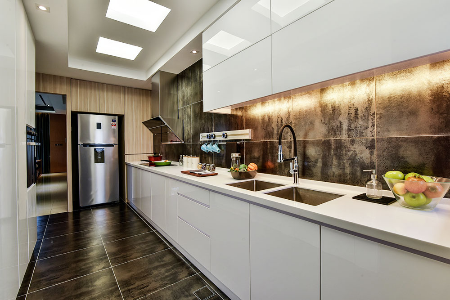
Counter Balance: How to Choose the Best Kitchen Countertop Surfaces
Friday, November 20, 2020
With all the various materials available for kitchen countertops, we figured you could do with some pointers on how to choose the most appropriate surface to suit your needs and your décor, so we gathered our team of experts and let them loose in our kitchens to help us put together what has turned out to be the internet's most definitive guide on materials for kitchen countertop surfaces.
Kitchen countertops can be formed out of completely natural or synthetic materials, or even some combination of both - all presenting different challenges. Your choice of material may be dependent on its colour and appearance, or what that selection says about your personality - but a forward-planning homeowner should also consider cost, availability, workability, durability, and maintenance needs before settling on a choice of a particular material.
 Designer: Craftsmen Valley
Designer: Craftsmen Valley
First of all, before settling on a particular material for surfaces that may become permanent fixtures in your kitchen, one should view and feel samples or mock-ups in person rather than depending on images to be accurately representative - as camera lenses, photo filters, and imaging algorithms sometimes do unpredictable things when reproducing real-life examples.
Laminates Since Formica® was popularized in Europe in the 1950s, laminates have made reappearances in the 1970s and in modern times to affect vintage interiors. Being a material largely composed of sheets of textile or fabric soaked in plastic resins, laminates are easily the most affordable material for kitchen surfaces. Various colours and textures are easily attained with the addition of pigments or thin sheets of natural materials into the compositions, meaning that the availability of laminates is likely the highest among all other materials. However, laminates will fade in direct sunlight and despite their highly synthetic composition, they do not stand up well to excessive moisture or corrosive chemicals such as some cleaning fluids. Although reputed to be susceptible to scratches and to scorching at high temperatures, laminates using modern formulations of resins have greatly increased their resistance to burns and scratches, as well as other forms of wear and tear in recent years.

Designer: IKEA
Wood The warming tones and grains of wood are ideal for creating a rustic or country atmosphere, working equally well when set within modern décors as accents. Wood is simple to work with, a fact that any high school student who has been subjected to woodworking classes can attest to. Wood is also highly workable, enabling curved surfaces that cannot be matched by the majority of engineered materials. Due to their natural origins and versatility in a wide range of interiors, wood is highly priced and limited in availability, meaning that finding large amounts of matching tones and grains may be a challenge. This much sought-after natural material requires a greater degree of care to maintain on account of its relative softness and porosity: wood is easily scratched, although the damage can be removed with sandpaper, but water is perhaps a wooden surface's worst enemy - requiring coats of varnish and regular doses of wood oil to seal gaps and prevent water from seeping in, which would result in the wood rotting from the inside and smelling of a wet forest.
 Designer: Casa Indah Design
Designer: Casa Indah Design
Concrete Countertops composed of cement and aggregate have been spotted making a resurgence in modern interiors ranging from minimalist to industrial. Relatively low in cost and high in availability, concrete surfaces can be customized in a wide variety of ways. Due to their initial liquid-like slurry state, concrete surfaces can be dyed with pigments, trowelled to form seamless curves, stamped with designs, pressed for marbled veins, or polished to a smooth finish. Concrete surfaces are highly resistant to scratches when fully set, but care should still be taken around this material as it can warp or even crack with extreme fluctuations in temperature, it also discolours with moisture and is susceptible to etching by mild acidic solutions. Due to their porosity when cured, concrete surfaces must be maintained with coats of sealer regularly applied every few months to prevent staining.
 Designer: Nevermore Design
Designer: Nevermore Design
Stone Natural stone such as granite, and softer stone such as marble, limestone, or soapstone have been popular in the last few decades, due in part to their timeless beauty and unique patterns. Natural stone has to be quarried from the handful of locations around the world known to be fortunate enough to have these beautiful materials thrust through the crust - as a result, the cost of acquisition is relatively high and dependant on the stone's origin and appearance, with availability being almost never guaranteed. Granite is the most durable, but like the rest of the popular stone materials, their natural porosity requires regular maintenance in the form of sealing coats.
 Designer: FIX Design Solutions
Designer: FIX Design Solutions
Solid Surface Typically composed of two-thirds mineral dust and one-third polymer resins, solid surfaces are perhaps the most versatile of all stone-based materials. Solid surfaces can be dyed with pigments and shaped into seamless curves in the same manner as concrete. Due to their composition being based on a by-product of quarrying activities, solid surface materials entail a reduced environmental impact, and they are relatively affordable in comparison to natural stone. Softer than granite, solid surfaces can be scratched - but the damage can be removed by sanding and polishing. Unlike natural stone, solid surfaces are non-porous and do not require sealing at the manufacturing level and little to no maintenance. Availability and installation may be an issue with this material, as the ownership of the high-technology facilities required to manufacture and install solid surface countertops are restricted to a few select entities.
 Designer: Havana Konzept
Designer: Havana Konzept
Quartz On the most durable end of the scale is quartz - often called engineered stone, which is composed of crushed stone that would otherwise have been discarded but is instead mixed with pigments and polymer resins to bind them together into the toughest possible material for your countertop. Quartz has been often touted as the material most resistant to scratches and heat, due to the high proportion of stone relative to synthetic materials in the composition of kitchen countertops. The dependence on unwanted stone rather than quarrying new materials makes quartz a more eco-friendly choice when compared against natural stone. The challenges with quartz are few, but considerable in importance: due to their manufacture being dependant on supplies of crushed stone, their cost is likely the highest among all other materials, availability in particular colours or styles may be limited, and by virtue of their hardness - quartz is the heaviest and most difficult material to install without professional assistance.
 Designer: Caesarstone
Designer: Caesarstone
Steel The preferred choice of serious chefs everywhere, steel stands up best to scratches and chemicals - especially when provided with a protective coating composed of polymers or carbon molecules. Various grades of steel are churned out from all corners of the globe, making this material one of the most available - but the heavy equipment and high level of expertise required to work steel into the forms necessary for kitchen countertops makes for relatively difficult and costly custom installations.
 Designer: Officine Gullo
Designer: Officine Gullo
Detailing and Finishes Once you have juggled all the various considerations that go into selecting the material for your kitchen countertop, its appearance, cost, availability, workability, durability, and maintenance needs - you cannot forgo putting some thought into the kind of detailing and finishes you want. Consider details such as bevels or curves to soften hard edges, and polishing the surface smooth for a reflective sheen, or dull for a matte finish to downplay the surface's prominence. You could even take things to the next level by mixing materials together: think a wood block framed in stone, for example.
Click here to see some more kitchens!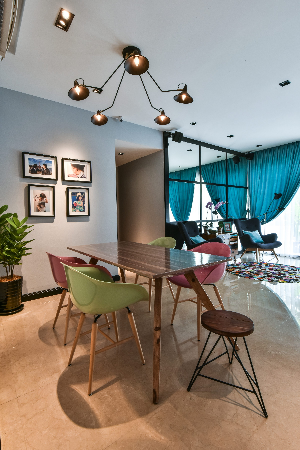
How to Select the Best Dining Table for Your Dining Room
Friday, November 20, 2020
The dining table is most often the central feature of dining spaces, contributing the most towards the décor by virtue of their size - which makes their selection all the more crucial.
The dining room is probably the one part of a home that sees the most people at any time - and whether people are just passing through or sitting down for meals, the table will have an impact on how diners perceive the space, the home, and the homeowner. As the selection of dining room furniture will likely be an event that does not occur very often, we wanted you to be as informed as possible before you set out on your journey towards your new dining table.
Material
 Interior design by: Viincology
Interior design by: Viincology
The kind of material that your dining table is made out of will have an effect on its lifespan and its appearance. Long-lasting materials such as hardwoods, metals, tempered glass, stone, and even mould-injected plastics are preferred for dining tables that are expected to endure many years of heavy use. Conversely, lightweight or flat-pack furniture composed of veneered wood composites such as plywood or fibreboard are made with mobility and affordability in mind, these materials are preferred for short-term arrangements by virtue of their being easier to pack and transport by design.
 Interior design by: Viincology
Interior design by: Viincology
Lightweight composite materials such as plywood or fibreboard are known to be significantly less durable, as they show a tendency to warp when subjected to excessive moisture or heat. Tougher natural materials such as hardwoods and stone tend to be porous, which entail regular maintenance with coats of varnish or sealer to prevent unintended staining from everyday use.
 Interior design by: SNG Conceptwerke
Interior design by: SNG Conceptwerke
Due to their being porous and softer than metal, wooden surfaces entail a greater degree of care to ensure their longevity. Oil-based varnishes should be applied to wooden surfaces at the point of manufacture - and periodically afterwards to prevent unintentional staining. Despite the higher level of maintenance required, metal furnishings tend to rust - especially when used outdoors, while wooden furnishings take on a characteristic smoothness and polished sheen as they age.
Size
 Interior design by: Hoe & Yin Design Studio
Interior design by: Hoe & Yin Design Studio
Having too large a table surface will result in a cramped dining space, while restricting diners to a small surface leads to elbows bumping in uncomfortably close quarters. It is the recommendation of most decorators to provide each diner with around 60 to 70 centimetres (or 24 to 28 inches) of space for adequate elbow room, and around 90 centimetres to 1.3 meters (or 36 to 50 inches) between a dining table and the surrounding walls for diners to comfortably get in and out of their seats.
Shape
 Interior design by: IDS Interior Design
Interior design by: IDS Interior Design
The shape of your dining table will determine the number of diners you can host and will affect the space it occupies. While round tables are capable of accommodating a greater number of diners, they tend to appear larger in small dining spaces - the conventional rectangular dining table takes up the most space, needing long and narrow spaces to avoid appearing overly large.
 Interior design by: IDS Interior Design
Interior design by: IDS Interior Design
To calculate the number of diners appropriate for a round table: multiply the diameter of a table by the value of Pi (π: 3.14) and divide the result by the amount of space needed for each diner. Using the previously mentioned minimum of 60 centimetres (or 24 inches) of space needed per diner, a round table with a diameter of 1.5 meters can easily accommodate 7 diners, or up to 8 diners with a negligible reduction in elbow room - while a rectangular table of similar size (at 1.5 meters long) can only seat a total of 6 diners – one at each end and two along each length.

Creating a Well-Composed Dining Room
Friday, November 20, 2020
Whether you have a large formal dining hall or a small area for daily mealtimes next to the living room, here’s how to put together different interior features to ensure your dining room looks and feels good from every angle.
 Interior design by: The Roof Studio
Interior design by: The Roof Studio
Whether you’re hosting a family dinner or just getting together for a weeknight meal, the dining room is where people come together. From modern to classic, there are many ways to turn this room into a cosy space that is perfect for entertaining your guest in comfort and style. Gone are the days when you need to have matching tables and chairs at your dining table. The trend is to go for features that complement each other. If you are going for a modern look, aim for furniture that has clean lines and sturdy material. Also, make good use of tableware to pull it all together.
Palette Play
It's easier to create a well-designed dining room when you have a strong starting point to guide you - this is where having a colour palette in mind can really help you focus on the elements you can use. If you love a certain colour and have a particular hue in mind for your dining room, start with this colour.
 Interior design by: The Roof Studio
Interior design by: The Roof Studio
For example, yellows are a great way to create a bright and vibrant dining space. Start with light yellow for the walls, then add on bolder shades of complementary tones like blues. However if you are not confident about using bold colours, go for a neutral and monochrome palette, like the dining room pictured here.
Accent Pieces
Don't just stop at tables and chairs in the dining room. If you have space, accent furniture like a console or an armoire can work wonders to help create a focal point and enhance those blank walls that envelope your dining area. However, choose something that blends with your dining table.
 Interior design by: Chaplins Furniture
Interior design by: Chaplins Furniture
In this dining room, a bright blue console works beautifully to bring attention to the table. The decorative accessories and mirror above the console add a lively look to the atmosphere. The bold pendant lamps are also just the perfect features to balance off the the space.
Material Maneuver
 Interior design by: Mode Interior Style
Interior design by: Mode Interior Style
Mixing and matching different materials in the dining room can offer a dramatic yet personalised effect to your space. Balance is key, as you don't want a single material to overwhelm the rest. Also offset hard and sturdy surfaces with soft furnishing to give your space a sense of cosy warmth.
 Interior design by: Mode Interior Style
Interior design by: Mode Interior Style
In this dining room, there is a bold variety of materials ranging from solid wood and faux grass to brick-like finishes on the opposite wall. The addition of the marble-like feature wall balances off the dark-coloured surfaces. The use of wood flooring just around the dining space also helps to demarcate the space clearly.
Vibrant Variety
Another way to mix materials is through a variety of different seating and surfaces. Mix-and-match seating works well when each chair or bench is of a similar style and shape. Also think about what you use as centrepieces on your dining table.
 Wood and ratan are making a huge comeback in the dining room, but those from the lighter range are preferred. Go for a Zen effect but break from the monotony with stronger tones and textures. Interior design by: iDecorate
Wood and ratan are making a huge comeback in the dining room, but those from the lighter range are preferred. Go for a Zen effect but break from the monotony with stronger tones and textures. Interior design by: iDecorate
In this warm and neutral dining room, the woven rattan chairs bring a sense of similarity to the entire set, but if you look closely, every single piece is individual in style. To further enhance the room, a tableware set with a similar look and feel is used.
Trendy Tableware
 Interior design by: iDecorate
Interior design by: iDecorate
Finally, complete your dining room with beautiful tableware to bring everything together. When it comes to choosing a dinnerware set, the choice is usually a matter of personal taste. It’s a necessity for any table, but it also sets the mood for a meal. For example, formal china can make a momentous occasion feel even more special, while basic stoneware is a good match for a low-fuss weeknight dinner.
 Colour coordinate your tableware by having a neutral backdrop and then enhancing it with bolder tones through colourful plates, bowls, and mug. Interior design by: Dunelm
Colour coordinate your tableware by having a neutral backdrop and then enhancing it with bolder tones through colourful plates, bowls, and mug. Interior design by: Dunelm
In the example here, a white dinner set complemented by green accents bring out a nature-inspired theme that enhances the wood dining table. To add texture, fabric placemats tone down the hard surfaces and introduce a lush quality to the space.
 Interior design by: Dunelm
Interior design by: Dunelm
Article by: Lily Wong
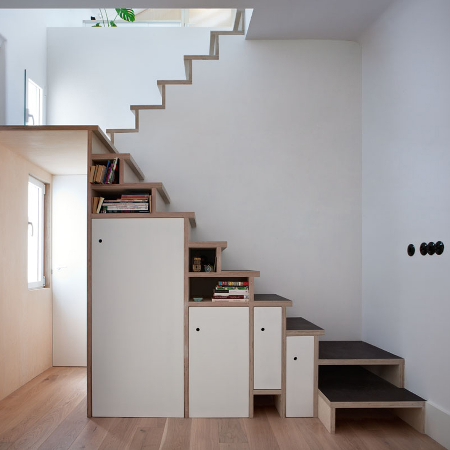
Step Storage: 7 Creative Under-Stairs Storage
Friday, November 20, 2020
The empty space under the stairs sometimes gets a bad rap on account of the many stories depicted in film that paint this potential storage space as a nest of insidious horror - or at the very least, a place of relative obscurity where things go to be forgotten. But in this modern age of urban living - where gratuitous space typically comes at a premium, we felt it be prudent to look at these spaces under the stairs in a new light, in order to discover novel ways of incorporating storage options.
Climbing Cabinetry
 Image Credit: Buj+Colón Arquitectos
Image Credit: Buj+Colón Arquitectos
In a compact space where a full-fledged staircase would have been overwhelmingly large, a lightweight stairway is formed out of progressively taller cabinets and bookshelves, with an intermediate split-level landing simplistically projecting from the top of the cabinetry. The result is deliberately left without a railing to achieve an unobtrusive stairway that is ingeniously disguised as storage.
Footwear Hideaway
 Image Credit: Post Architecture
Image Credit: Post Architecture
The act of removing one’s shoes when entering a home has transitioned from being a distinctly Asiatic custom of tradition to a practical measure in many urban homes around the world - which necessitates considerable storage fixtures to be incorporated at the entryway. The pictured shoe drawers, designed by Toronto-based Post Architecture, enable a sizable family’s worth of shoes to be neatly stowed away in the unassuming space beneath the stairs.
Stairway Stack
 Image Credit: Schemaa Architects
Image Credit: Schemaa Architects
While a stairway with a steep incline may present a formidable barrier to the upper floors, the complete use of extra space for cabinetry helps to disguise the risers and treads of the pictured loft-style staircase. To soften the gradient of the stairway, Schemaa (a Parisian architecture firm) incorporates intermediate blocks of wood to break up the high risers of the steps - resulting in a more graceful incline.
Aperitif Alcove
 Image Credit: DIY Network
Image Credit: DIY Network
An alternative to wholly dedicating the space under the stairs to storage is put forward by the DIY Network’s Watson Hawkins. The idea entails moving beyond pure storage and adding a facet of functionality to the space. In the pictured example, nearby countertops are extended to the space beneath the stairs, with cabinetry truncated at an angle to match the slope of the stairway’s carriage.
Sequestered Office
 Image Credit: Translina
Image Credit: Translina
For the majority of those who often find themselves working at a desk while at home, the extra headroom often goes to waste during those hours seated at a desk. Rather than dedicating an entire room to a home office and letting that overhead volume go unused, the pictured staircase incorporates a diminutive office space - where the lower clearance serves to neatly encapsulate the work corner.
Foyer Fixtures
 Image Credit: Minimalist Desk
Image Credit: Minimalist Desk
Walking out of the front door is a ritual that often gets repeated whenever a necessary object gets left behind - with the procedure often followed by dashes up and down the stairs to retrieve some forgotten item. The entryway often gets cluttered with catch-all containers and furniture as a result. The pictured stairway holds an ordered array of wicker baskets in niches beneath the carriage to negate the clutter and hide vital containers from sight.
Hidden Habitat
 Image Credit: Basement Remodeling
Image Credit: Basement Remodeling
Spaces deemed too small for a human to utilise can be handed over to our smaller companions instead. With their uniquely low-lying perspectives, even the smallest of burrows can shelter whole landscapes that are worlds apart from their larger environment. The pictured stairway accommodates a desk just wide enough to be used (by a human) for writing letters - with the extra headroom dedicated to wine storage, while the extra space to the side goes to one lucky quadruped.
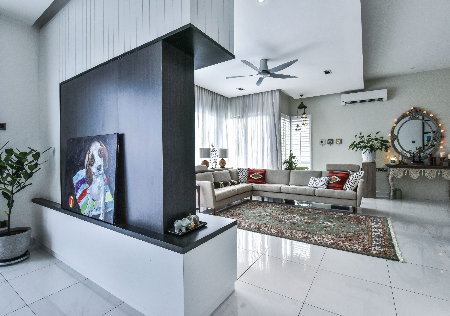
How to Decorate With Living Room Accessories
Friday, November 20, 2020
Strike a balance between functional additions and decorative frills to reflect the detailed complexity of life.
Perhaps for reasons that will never be fully explained, a blank canvas will attract a painter’s brush and masterpieces will come to be appreciated for their details more than the sum of their parts. Just as most prized paintings began as blank canvases, a living space sometimes starts off as a sparse array of furniture and accessories, increasing in complexity with time as the signs of life accumulate within it. A barren living space can be easily remedied with the addition of a lighting fixture or a piece of artwork to draw the eye - but if you seek to design an elegant living space layered in intriguing complexity from the beginning, then read on.
Personal Touch
 Interior design by: M Innovative Builders
Interior design by: M Innovative Builders
Sentiment binds us together with shared meaning despite our individual differences, with personal significance and nostalgia occasionally representing greater value than even the most commonly treasured of material objects. Aside from all the known characteristics that make up the range of decorative styles prevailing in our present time, the single most influential factor that differentiates an interior is self-expression. The designers of the pictured seating lounge, M Innovative Builders, demonstrate this philosophy in practice by bringing together favoured and seemingly disparate decorative elements to produce a space that is uniquely cohesive and tailored for the comfort of the residents.
Fine Details
 Interior design by: The Roof Studio
Interior design by: The Roof Studio
Bland spaces tend to have little to say, but adding a handful of details in the background - or a few comforting accessories such as a coffee table or clutter tray in the foreground, imbues a space with layers of complexity to capture attention and entice the wandering mind. The Roof Studio demonstrates the striking effects of imposed detail by decorating this living room with an abundance of wooden surfaces and placing them in close proximity to the high-pile carpeting. The result is an elegant array of layers that evokes interest with complementary details in texture and shade.
 Interior design by: The Roof Studio
Interior design by: The Roof Studio
Tips: The addition of a few accessories does more than provide some comfort. Without the necessary amenities (throw cushions, floor lamp, end table, coffee table, clutter tray, and potted plant), the result would potentially resemble a furniture showroom rather than an actual living room.
 Interior design by: The Roof Studio
Interior design by: The Roof Studio
Repeat Motifs
 Interior design by: ST Concepts
Interior design by: ST Concepts
The pursuit of elegance entails a delicate balance struck between grace and ingenuity, necessitating careful consideration when selecting colours and materials. As decoration is simultaneously an art and a science, the creation of a décor should be subjected to creative and logical guidelines to achieve a cohesive and visually appealing arrangement. In the pictured seating lounge decorated by ST Concepts, complex layers of wood, stone, and light are created with a sprinkling of decorative and functional accessories - all unified in the complementary shades of the neutral palette so as not to overwhelm the eye with dissimilar elements.
 Interior design by: ST Concepts
Interior design by: ST Concepts
Tips: When you want to shy away from bold and colourful patterns, texture is your best friend. Neutral is never boring when a variety of textures are used. Mix it up! Repeating the same pattern throughout a room is also a reliable way to achieve cohesiveness.
 Interior design by: ST Concepts
Interior design by: ST Concepts
Art Aesthetics
 Interior design by: X Dimension Design
Interior design by: X Dimension Design
Handcrafted artistic works represent countless hours of effort and are often valued for their uniqueness and irreproducibility - even more so in this age of automated manufacturing. The introduction of artwork does more than provide a splash of colour or texture - art has the potential to evoke emotion, inspire thought, and invite critique, with the results leading to a discernible rise in the complexity of a space and its character. To illustrate this, X Dimension Design incorporates serene landscapes into the décor of the pictured living room, with the artwork diligently curated to echo the hues of the space.
 Interior design by: X Dimension Design
[gallery columns="2" size="medium" ids="59194,59195"]
Interior design by: X Dimension Design
[gallery columns="2" size="medium" ids="59194,59195"]
Light Up
 Interior design by: Sachi Interiors
Interior design by: Sachi Interiors
Large pieces of furniture and glittering artefacts tend to draw the gaze of naïve observers - occasionally, to the detriment of a sparsely decorated space. Lighting fixtures are useful add-ons that serve to simultaneously highlight subtle decorative features and direct the eye away from default points of attention. In the pictured seating lounge, Sachi Interior Design opts for an intriguing floor lamp fitted with a robust diffusing shade to at once illuminate the furniture arrangement and throw an array of light and shadow into a corner for a visually striking effect.
 Interior design by: Sachi Interiors
Interior design by: Sachi Interiors
Tips: Even neutral coloured spaces can benefit from a beguiling display of light and shadow. This living room presents additional variations of the neutral shades with the aid of prominent lighting fixtures.
 Interior design by: Sachi Interiors
Interior design by: Sachi Interiors





